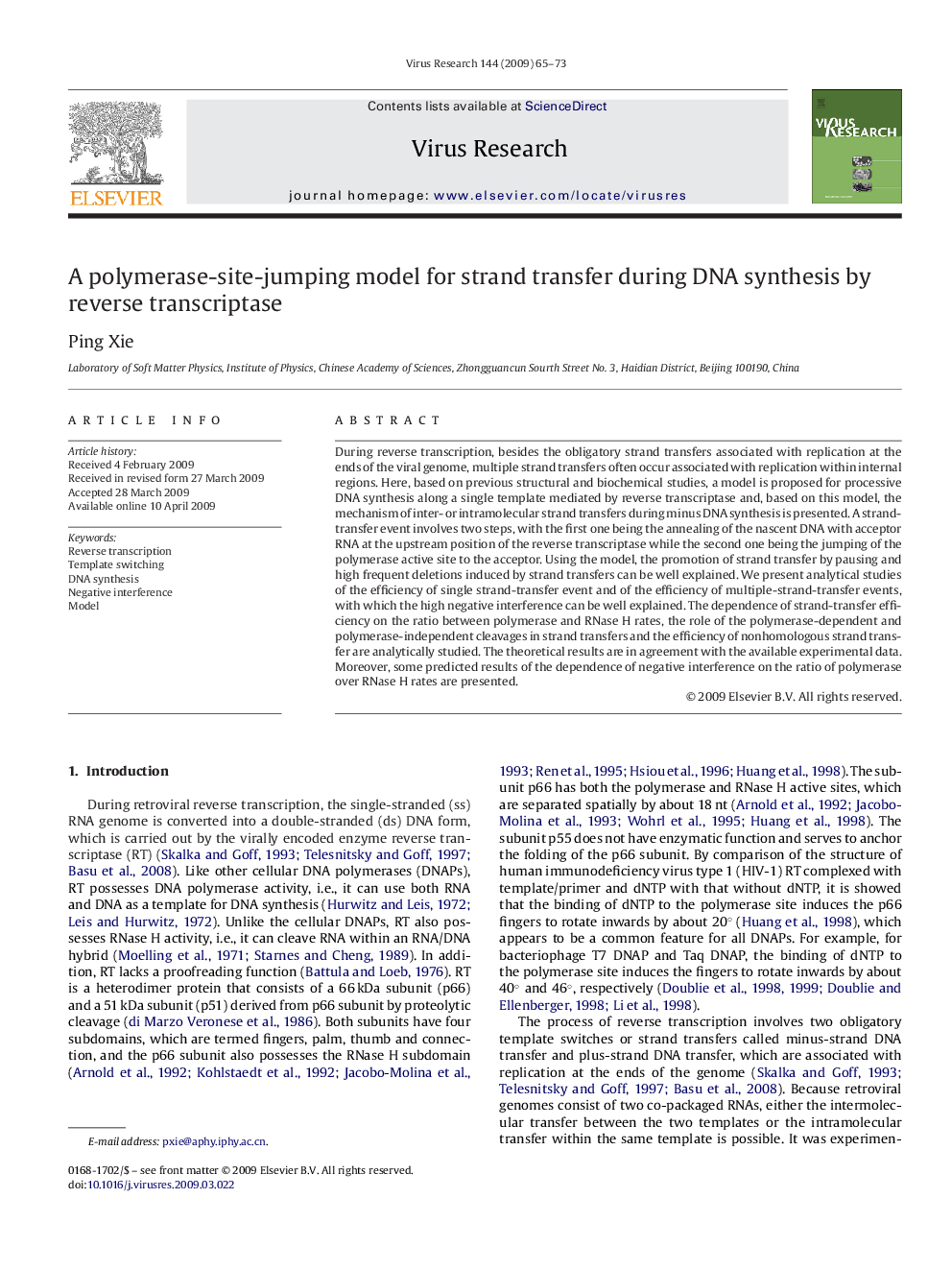| Article ID | Journal | Published Year | Pages | File Type |
|---|---|---|---|---|
| 3429660 | Virus Research | 2009 | 9 Pages |
During reverse transcription, besides the obligatory strand transfers associated with replication at the ends of the viral genome, multiple strand transfers often occur associated with replication within internal regions. Here, based on previous structural and biochemical studies, a model is proposed for processive DNA synthesis along a single template mediated by reverse transcriptase and, based on this model, the mechanism of inter- or intramolecular strand transfers during minus DNA synthesis is presented. A strand-transfer event involves two steps, with the first one being the annealing of the nascent DNA with acceptor RNA at the upstream position of the reverse transcriptase while the second one being the jumping of the polymerase active site to the acceptor. Using the model, the promotion of strand transfer by pausing and high frequent deletions induced by strand transfers can be well explained. We present analytical studies of the efficiency of single strand-transfer event and of the efficiency of multiple-strand-transfer events, with which the high negative interference can be well explained. The dependence of strand-transfer efficiency on the ratio between polymerase and RNase H rates, the role of the polymerase-dependent and polymerase-independent cleavages in strand transfers and the efficiency of nonhomologous strand transfer are analytically studied. The theoretical results are in agreement with the available experimental data. Moreover, some predicted results of the dependence of negative interference on the ratio of polymerase over RNase H rates are presented.
